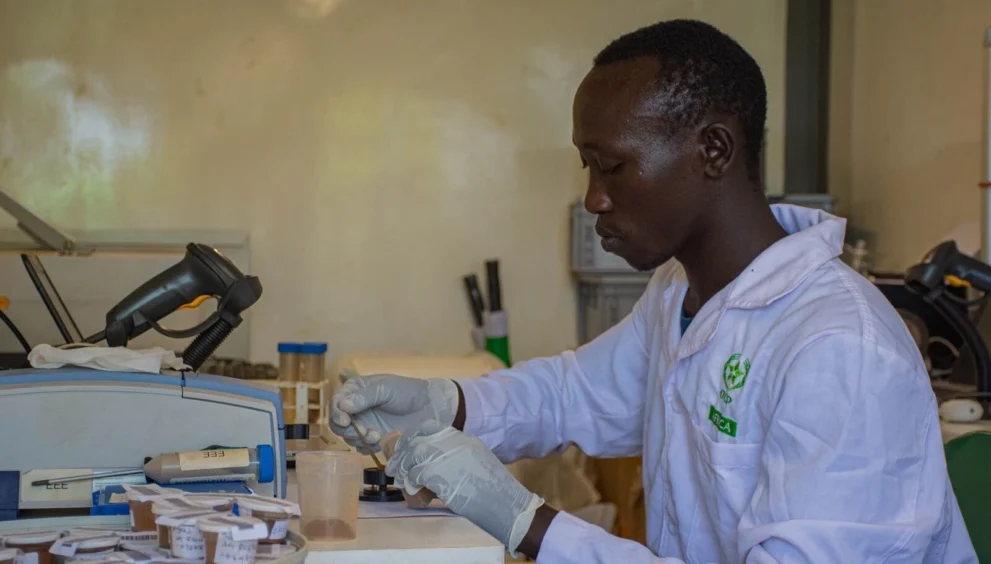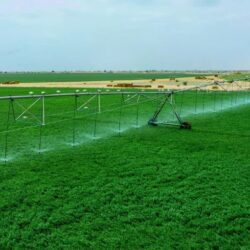- While the continent is developing fast, Africa risks not meeting its Sustainable Development Goals, especially with regards to hunger and poverty reduction.
- At the intersection of these two challenges, a science-based agricultural strategy can reduce poverty and hunger.
- Soil restoration, targeted investments in research, technology and tailored fertilizer formulations all play a role in a science-based agricultural strategy.
We are getting close to the 2030 deadline when Africa, like the rest of the world, should have achieved many, if not all, of the UN’s Sustainable Development Goals. But with just six years left, the African continent finds itself significantly off-track for many of the targets, particularly those relating to the reduction of hunger and poverty.
To reignite the momentum towards achieving these vital goals, urgent action for agricultural transformation is required. Indeed, agriculture is the backbone of Africa’s economy, where, according to the International Labour Organization, it contributes nearly one third of the GDP, and employs over 60% of the workforce. It is also the sector where Africa has a significant advantage over other continents. Africa has abundant resource availability, a year-round climate that favours agricultural production, vast tracts of unused arable land and the world’s youngest population — more than half of the people in the continent will be under 25 years of age by 2050, as per data from the World Bank. This highlights the challenge posed by Africa’s rapid population growth, which is projected to increase from 1 billion today to 1.7 billion in 2020 and 2.4 billion by 2050.
Africa: Challenges and opportunities in agricultural development
Yet despite these inherent strengths, progress towards the achievement of agricultural sustainability for the continent has been slow, with food security remaining a key threat and goal. Africa currently imports $55 billion of food annually, and without improvements in agricultural productivity, this figure is projected to double to $110 billion in 2030. Challenges such as deforestation, water scarcity, soil degradation and rising temperatures continue to threaten the continent’s agricultural productivity. Recent projections by the Centre for Global Development indicate an alarming 18% decline in yields by 2050 going by the business-as-usual approach. A report by the International Fund for Agricultural Development (IFAD) paints an even more grim picture, suggesting an 80% reduction in staple crop yields across eight sub-Saharan African countries over a similar timeframe.
To address these pressing challenges and unlock Africa’s agricultural potential, a concerted effort to transition toward science-based agricultural practices is required. This involves actions and investments aimed at leveraging the latest scientific research and technologies to optimize crop yields while minimizing environmental impact.
Soil, fertilizer and research: science-based strategies in action
One critical imperative for enhancing agricultural productivity is through the restoration of the continent’s lost soil fertility. Years of cultivation with minimal replenishment have left Africa’s agricultural land severely depleted. Notably, research by the International Centre for Tropical Agriculture shows that the current soil degradation rates in Africa are up to 100 times higher than the soil’s natural regeneration rate. This has left farmers to suffer a widening crop yield gap, estimated to cost the continent an annual loss of $68 billion and severely weakening Africa’s ability to feed itself.
For rapid restoration, an increase in the application of fertilizer formulations that are tailored to suit the diverse soil conditions and crop varieties in the continent is a minimum imperative. The direction to this objective was established at the African leaders meeting at the Africa Fertilizer and Soil Health Summit in Nairobi, Kenya, earlier this month, where at least 33 African governments committed to accelerating action towards restoring their countries’ soil health. The Nairobi Declaration, which was ratified at the summit, recognized the central role of customized fertilizers in maximizing the output of Africa’s soils. The summit highlighted a key fact: while the average global fertilizer consumption is about 135 kg/ha, Africa’s average is only 18kg/ha, falling short of the target of 50kg/ha set in the Abuja Declaration in 2006. Meanwhile, investments in other soil health management practices, such as conservation agriculture and organic matter restoration, continue to be instrumental in the gradual mitigation of the effects of soil degradation and nutrient depletion, thereby significantly boosting long-term agricultural productivity. Healthier soils also combat climate change, both by absorbing large quantities of carbon from the atmosphere and reducing pressure to convert forests to agriculture.
Science-based strategies already underway across Africa
Further success can be achieved by adopting and scaling up proven interventions, including targeted investments in research, technology and extension services. Several African countries, including Ethiopia, Ghana and Tanzania, have already demonstrated the transformative potential of climate-and-nature-positive farming techniques in driving up agricultural productivity. In Ethiopia, the findings of a study published in the Agronomy Journal indicate that the national annual production of teff has increased by 113%, maize by 9.8%, sorghum by 4.6% and wheat by 9.4% over the last decade. In Ghana, the 2023 aggregate cereal production was estimated by the UN’s Food and Agriculture Organization to reach 5.3 million tonnes, 4% above the previous year’s level and 18% above the five‑year average. Tanzania, on the other hand, has been increasing its maize production year-on-year with projections of a 36% increase in its exportable surplus during marketing year 2023-2024, according to USAID. These figures illustrate only the beginnings of what needs to be achieved. With current yields across Africa at less than 25% of their potential, there is immense scope to close this yield gap, transforming Africa into an agricultural force not only capable of feeding itself but also becoming a significant contributor to global food security.
However, to achieve accelerated continent-wide growth, it’s imperative to foster collaborative efforts driven by the south-south cooperation for a concerted bid focused on transforming the continent into a dynamic, science-based agricultural powerhouse. Such collaboration is important for knowledge-sharing and driving the adoption of innovative technologies, but its success hinges on full participation from all stakeholders, including governments, the private sector, development partners and the scientific community.
By leveraging the collective expertise and resources of nations across the southern hemisphere, we can forge a sustainable path towards agricultural development that not only boosts productivity and ensures food security for future generations, but also paves the way for economic prosperity and social advancement across the continent.




